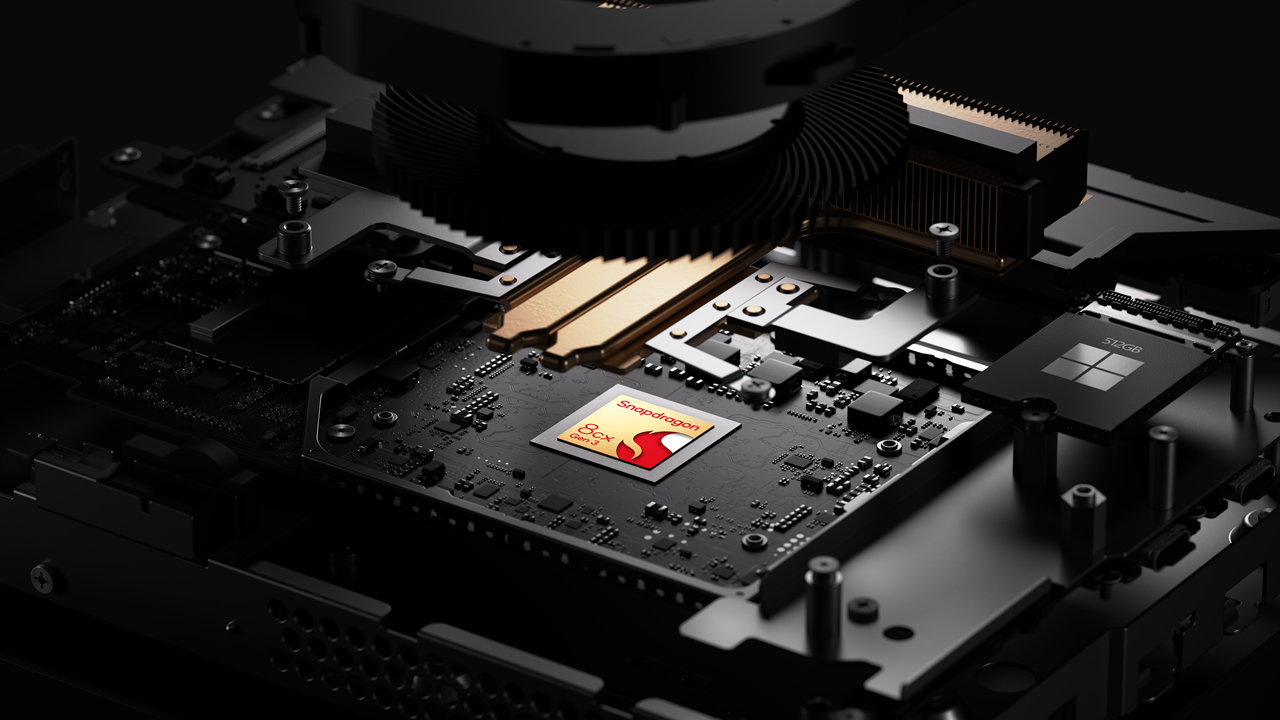Microsoft’s Windows on Arm Dev Kit Costs $599
Project Volterra is shipping in eight countries.
Microsoft is launching the Windows Dev Kit 2023, which was announced back in May as "Project Volterra" at Microsoft Build. The developer box, powered by Qualcomm's Snapdragon 8cx Gen 3 compute platform, costs $599 and will ship in the United States, United Kingdom, Australia, Canada, China, France and Germany.
The idea of the Dev Kit is that developers will make Windows apps for Arm-based systems. It's an area where Windows has slowly been growing in terms of software support. Vendors such as HP, Asus and Lenovo have made Windows on Arm laptops to varying degrees of success, and Microsoft uses customized Qualcomm chips in its Surface devices (the latest, the Microsoft SQ3, will power the Microsoft Surface Pro 9 with 5G).
| CPU | Qualcomm Snapdragon 8cx Gen 3 |
| Graphics | Qualcomm Adreno GPU ( integrated) |
| Memory | 32GB LPDDR4x |
| Storage | 512GB NVMe SSD |
| Networking | Wi-Fi 6, Bluetooth 5.1 |
| Ports | 2x USB 3.2 Gen 2 Type-C, 3x USB 3.2 Gen 2 Type-A, Mini DisplayPort, Ethernet |
| Size | 8 x 6 x 1.1 inches (196 x 152 x 27.6 mm) |
| Price | $599 |
The desktop is tiny at just 8 x 6 x 1.1 inches, but still has plenty of ports for developers who need to power multiple monitors (as long as they're willing to use USB Type-C and Mini DisplayPort) and peripherals. There are three USB Type-A ports, two USB-C ports and an Ethernet jack.
Microsoft is also highlighting the Snapdragon's neural processing unit, or NPU, as a feature for developers to design AI and machine learning applications around, using models like PyTorch and SensorFlow. Microsoft claims that for some models, "the NPU is about 80-90 times faster than CPU and about 20 times faster than GPU."
Back in May, Microsoft announced its intentions to release an Arm-native toolchain for apps built for the architecture. It says that it has released previews of several of these and most will be available by the end of the year. Additionally, Visual Studio 2022 17.4 has Arm-native support in C++, C$, Windows SDK and App SDK components, and workloads for the web, UWP, Node.js and game development.
If Microsoft sees a future in which Windows on Arm is as prolific as Windows using x86 platforms (or more realistically, anywhere close), getting developers on board is crucial. That does make me wonder about the $599 price. Enterprise customers might be able to afford that, but that's a heck of a price for individual developers. Microsoft should be giving these away to even get individuals developing for Windows on Arm.
Microsoft has made a number of its own apps Arm-native, including Teams, Edge and Office. Other apps that made the switch include Firefox, Adobe Photoshop, VLC, Netflix, Handbrake, Zoom and 7-Zip. With Windows 11, Microsoft is supporting x64 emulation, but that's not the same as a native app. Some software still doesn't work, and games and many antivirus and applications still aren't up and running. Microsoft's Arm64EC is designed for developers to either build new Arm apps natively, or slowly integrate new features into existing apps.
Will the new hardware result in a slew of new Arm-native software, as well as more cloud, AI and machine-learning-based apps? It's unclear. But this $599 bet suggests Microsoft thinks there's interest. Only time will tell if the company is right.
Get Tom's Hardware's best news and in-depth reviews, straight to your inbox.

Andrew E. Freedman is a senior editor at Tom's Hardware focusing on laptops, desktops and gaming. He also keeps up with the latest news. A lover of all things gaming and tech, his previous work has shown up in Tom's Guide, Laptop Mag, Kotaku, PCMag and Complex, among others. Follow him on Threads @FreedmanAE and BlueSky @andrewfreedman.net. You can send him tips on Signal: andrewfreedman.01
-
velocityg4 I wonder how long it will take until benchmarks show up comparing this to Apple's M1 or M2?Reply -
Xenx Reply
The chip in this has been out for a while. See the Lenovo ThinkPad X13s. The comparisons are not good vs Apple, but they do show a marked generation improvement. Benchmarks vs reality, but the M1 is like 50+% faster.velocityg4 said:I wonder how long it will take until benchmarks show up comparing this to Apple's M1 or M2? -
verdammte You have to keep something in mind with these benchmarks. Apple devices use their own language with machine code created for the exact model SoC that's going to run the devices and it's doing so on a secured platform. Windows benchmarks are not written and compiled for any particular SoC at all. It's completely generic so much that an M1 Mac can run a windows benchmark inside windows. That create a major, major bias in favour of the Apple chips with benchmarks results. Comparing the two is like having an able-bodied sprinter and a handicapped sprinter running the exact same race, side-by-side. That's just not a fair comparison.Reply
I respect the M1 and M2. I bought a macbook with an M1 Pro so I could do my sound design and music composition work and I enjoy it (even though I despise Apple). Regardlesss, we simply can't compare them until Windows apps are compiled specifically for the SQ1, the SQ2, the SQ3, or whatever else is in them, cause when you run that same benchmarking software on the Apple device, the code is not only already apple specific, but it's apslo compiled for the exact SoC running the application. Not even close to fair. Of course the Apple will have a much better score. Do I think the Apple SoCs genuinely outperform the SQ1 and SQ2? Yes. I also know the SQ2 GPU outperforms both the M1/Pro and the M2's GPUs. The SQ3 GPU should outperform all of them as well, aside from the Ultra. I think we'd find the SQ3 and M2 are about on par with each other in a balanced test while we'd also see the SQ3's 3w of power usage absolutely destroying the 15-75w of power draw throughout the M-series. The SQ3 and family are unquestionably the best performers per watt from what I can see. When it comes to memory, it's hard to tell, but the Apple unified memory is likely a fair bit faster, but the nvme speed sucks and it's hard to upgrade sizes. It's easy to do on the Surface. I've done it many times. -
bit_user I hope someone gets Linux booting on these. Still kinda pricey, relative to a comparable NUC, but a lot more interesting for desktop usage than a Rasperry Pi 4!Reply -
bit_user Reply
I don't agree with this. I'm not really sure which ARMv8-A extensions would yield the kind of performance benefit that you claim. If you look at Apple's upstreamed LLVM support for their CPUs, all they do is enable different ISA extensions, but they use the same cost model as their first ARMv8-A CPUs.verdammte said:You have to keep something in mind with these benchmarks. Apple devices use their own language with machine code created for the exact model SoC that's going to run the devices and it's doing so on a secured platform. Windows benchmarks are not written and compiled for any particular SoC at all. It's completely generic so much that an M1 Mac can run a windows benchmark inside windows. That create a major, major bias in favour of the Apple chips with benchmarks results. Comparing the two is like having an able-bodied sprinter and a handicapped sprinter running the exact same race, side-by-side. That's just not a fair comparison.
I don't know what you're basing this other than marketing hype. The SQ3 is basically an 8cx Gen 3, which is quad-X1 + quad-A78. Those cores aren't remotely comparable to the M1's. Even ARM's latest A715 and X3 aren't.verdammte said:The SQ3 GPU should outperform all of them as well, aside from the Ultra.
Qualcomm won't have anything that can challenge Apple at least until their Nuvia-powered generation reaches the market, although last I heard they're currently tied up in court battles with ARM. -
JamesJones44 Replyverdammte said:Regardlesss, we simply can't compare them until Windows apps are compiled specifically for the SQ1, the SQ2, the SQ3, or whatever else is in them, cause when you run that same benchmarking software on the Apple device, the code is not only already apple specific, but it's apslo compiled for the exact SoC running the application
A Benchmark could compile for generic a generic ARM instruction set and it would work on both. I can't say that they will ever do this, but it's possible.
